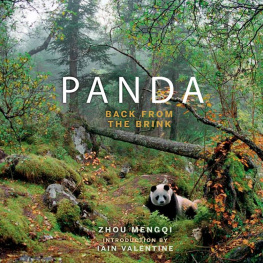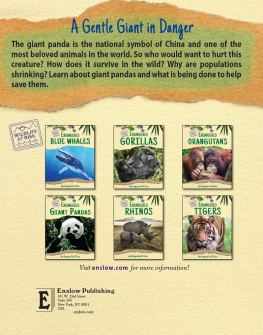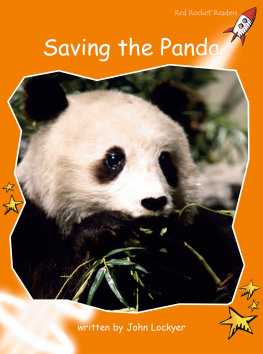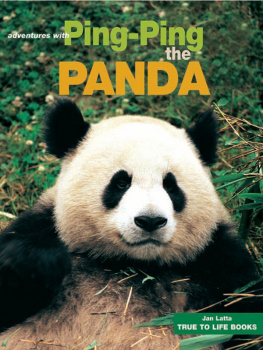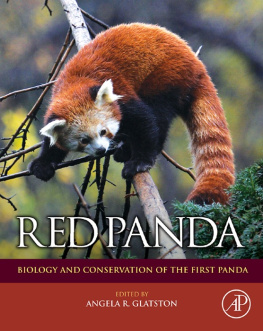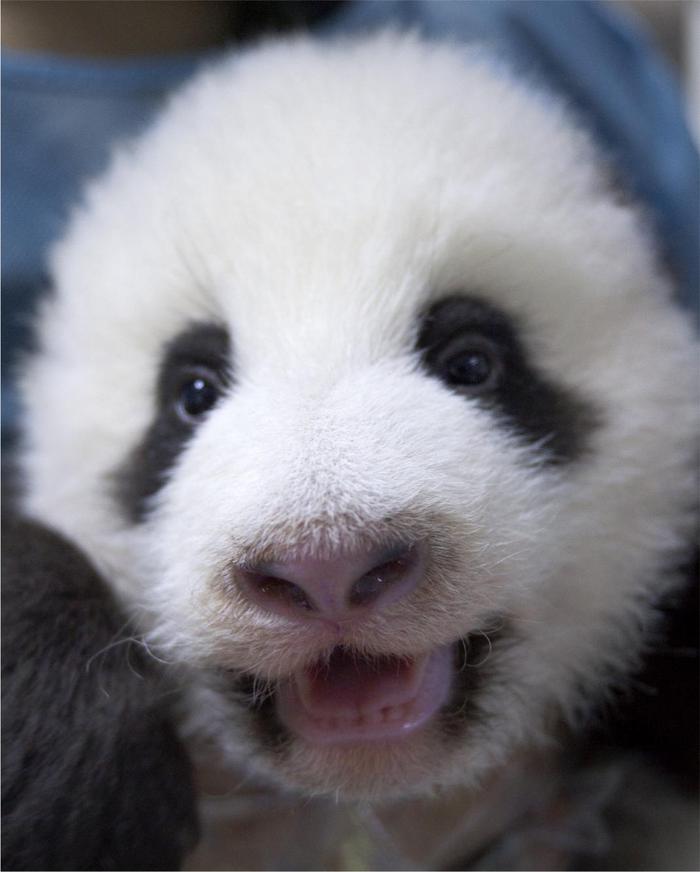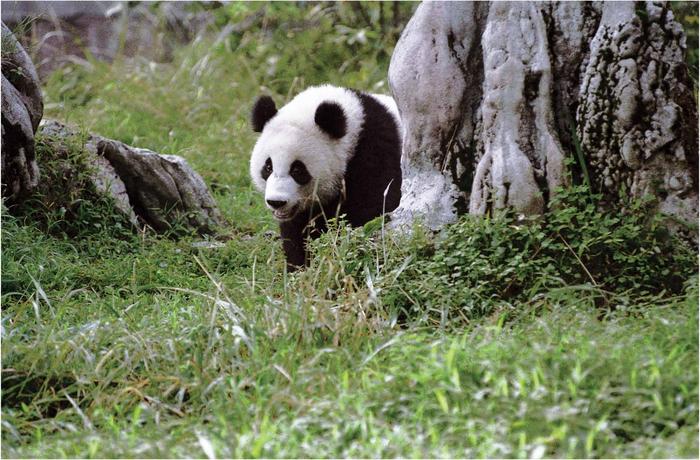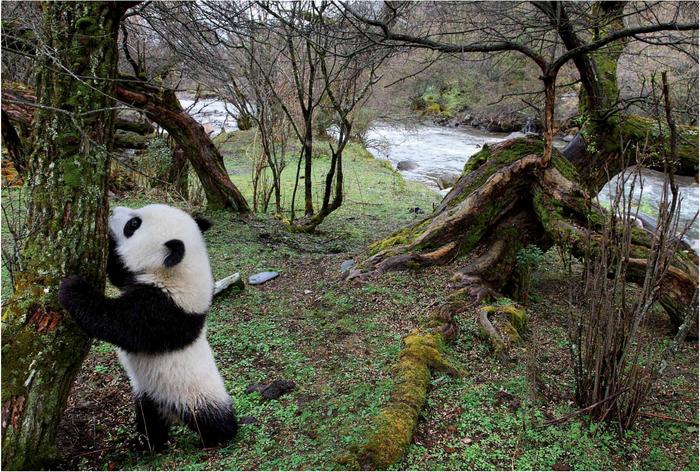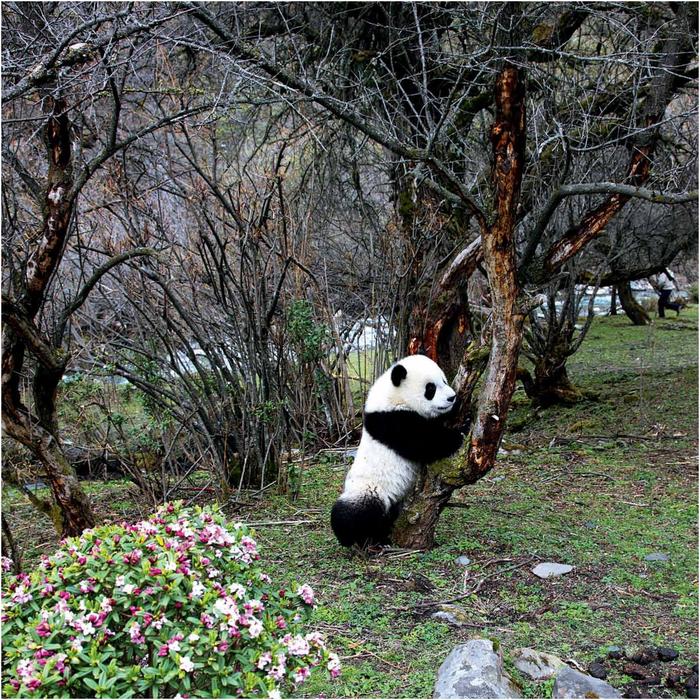It is a privilege to watch the panda going about its business in its natural habitat.
IAIN VALENTINE
T HERE IS NO OTHER ANIMAL , as far as I know, that elicits such overwhelmingly positive responses in humans as the giant panda, whether in real, live encounters or simply from photographs.
Yet despite the massive public following that giant pandas have both in and outside China, this endearing animal is still very much a mystery to us in terms of its biology and how it lives in its natural habitat: the mountains of southwestern China. And, of course, it is still a gravely threatened species, with a population in the wild of only around 1,500, and a further 300 in captivity globally (most of them in China).
The giant panda being such a reclusive, shy animal, as well as being a relative newcomer to the world of the scientist, few people Western or Chinese have ever had the privilege of observing, photographing or filming pandas in the wild.
The tireless work of Zhou Mengqi over the course of many years in studying and gathering images of giant pandas, both in the wild and in captivity, is as impressive in itself as the images he has captured for this book.
The difficulty and hardships that he will have had to endure in ensuring that he was in the right place at the right time to photograph such a rare animal, in such harsh terrain, and within such a wide area of high, mountainous bamboo woodland, are testament to his own dedication to the species.
With such stunning images available, its only right that they are used to help paint a modern, easily understood picture of this animal, and in so doing, to help provide you, as the reader, with a greater insight into all that surrounds giant pandas.
As a symbol of a global conservation movement and as the easily identifiable ambassador and symbol of the mighty country of China, a great deal of attention has always been given to the panda and never more so than when pairs of them are sent on loan from China to zoos in other countries.
At the time of writing this introduction, we are just weeks away from receiving Britains first pair of giant pandas since the mid-1990s. Tian Tian, the female panda, and Yang Guang, the male, will be housed for the next ten years at the Royal Zoological Society of Scotlands Edinburgh Zoo, where they will play their own parts in helping to ensure the long-term survival of this species.
The pandas will, of course, do what pandas do, and they will do it well in Edinburgh, but importantly they come as ambassadors of China, as the countrys national treasure, their loan representing a gift to the people of the UK from the Peoples Republic Of China. But what does this mean, and what are the opportunities for us all, beyond seeing these wonderful animals at Edinburgh Zoo?
As the world around us changes, as we get to grips with the pressures and damage that we have inflicted about ourselves and on the planet, its apparent to all those working within the field of conservation that our own survival is inextricably linked to safeguarding and protecting biodiversity other species and their habitats in the world we all share. Collectively, then, humans need to work together; to understand one another, appreciate our differences, but share our common goals.
China is a nation that will undoubtedly have a major role in shaping the worlds future, and so its actions will impact on us all in many ways in the years to come.
Through pandas we can learn much more about this diverse country its people, its culture, its politics, its rich environment and wonderful biodiversity. We can learn more about Chinas environmental efforts, and we can share with China our own knowledge and experiences to further our own conservation efforts here in the UK.
But what of pandas, what future do they have?
Like everything else within the field of conservation, the protection of pandas is a responsibility we all share. The Chinese government continues to allocate tremendous resources to the conservation of this species and the habitats that giant pandas occupy. In time, new reintroduction projects will be attempted in a bid to augment the wild population and to re-establish the pandas in areas in which they were once found. Its our duty to support and encourage these efforts and all that China is doing for pandas.
I struggle to think of any other species that can motivate the human race in the way pandas can: to provoke thought and to inspire us all to will the species on to become a resounding conservation success story.
In many ways the achievement of modern China in balancing its environmental credentials with sustainable economic development mirrors what has been happening to the panda population. The fact that the numbers of pandas appear stable maybe even increasing in some areas is testament to the hard work that has been dedicated to safeguarding this species for many years already.
However, with a global population of fewer than 2,000 animals, this species remains critically endangered and in a fragile state, and we cannot ignore these sobering facts.
This book is a wonderful tribute to a seriously wonderful animal. Read, enjoy the pictures, and be glad that your book has contributed to the Royal Zoological Society of Scotlands panda fund, but make sure you do something more to help further the conservation efforts of our species for future generations.

Panda cubs learn to climb from a young age.
The giant panda is unique and not just uniquely cuddly or charming: there really is no other animal like it in the natural world.
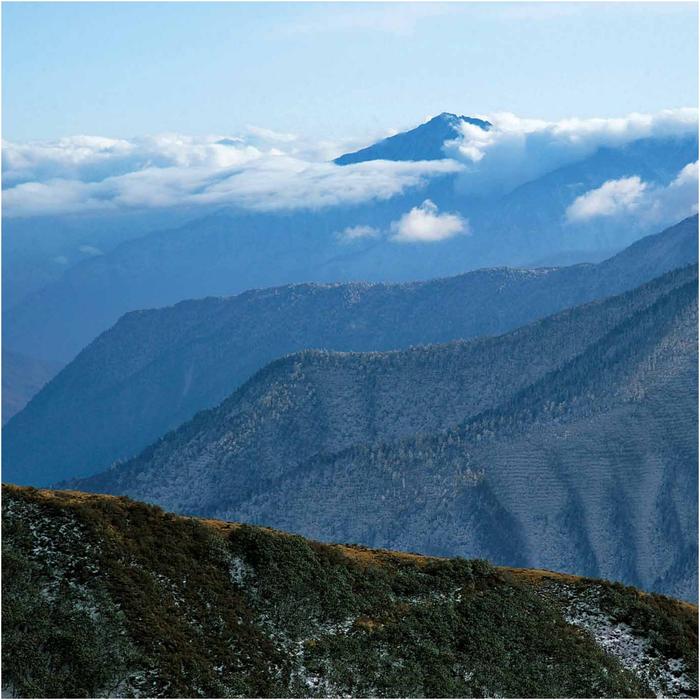
Pandas have flourished on the rugged slopes of Sichuans Jiajin Mountains for millions of years. Their range once extended across much of lowland China, too.
T HE GIANT PANDAS NEAREST RELATIONS ARE NOTHING LIKE AS CLOSE AS WEVE LONG ASSUMED ; theyre distanced not only by genetics and geographical distribution, but by enormous differences in diet and lifestyle, too. Despite belonging to the zoological family of the Ursidae, or bears, giant pandas differ markedly from their relations in everything from anatomy to behaviour.
IN THE TEETH OF THE EVIDENCE

